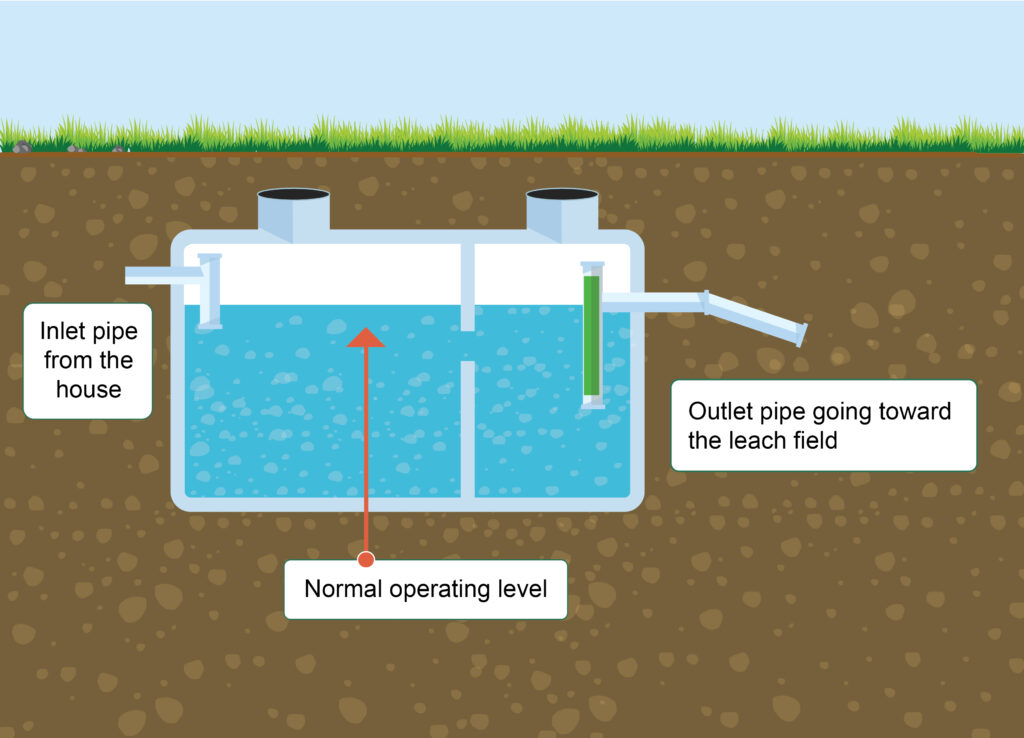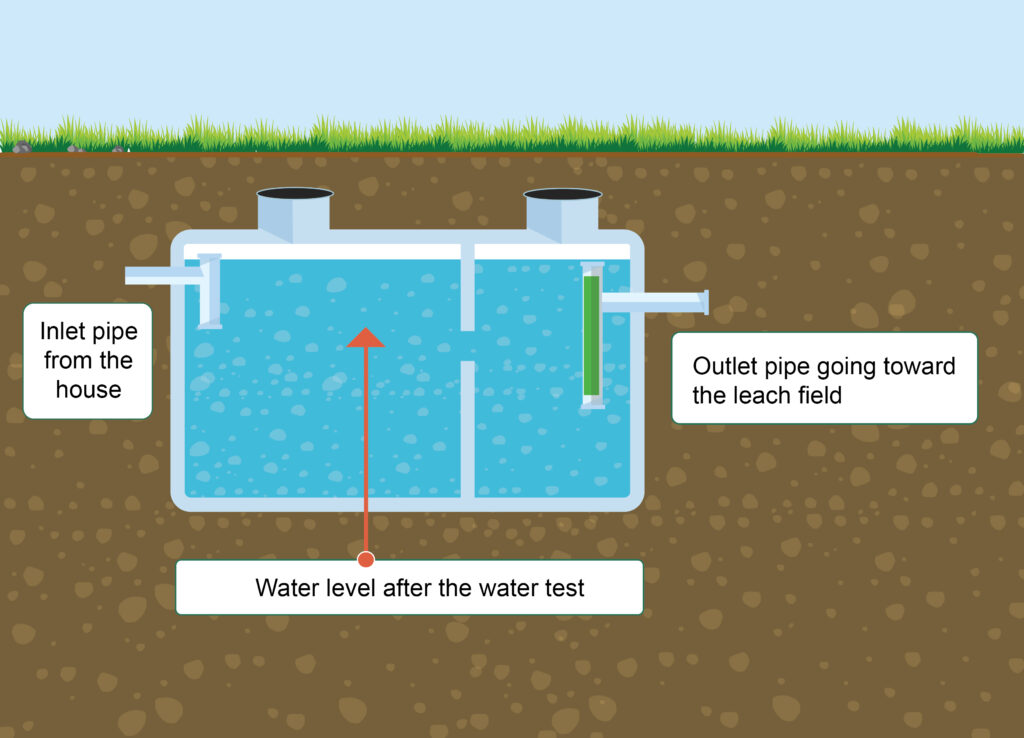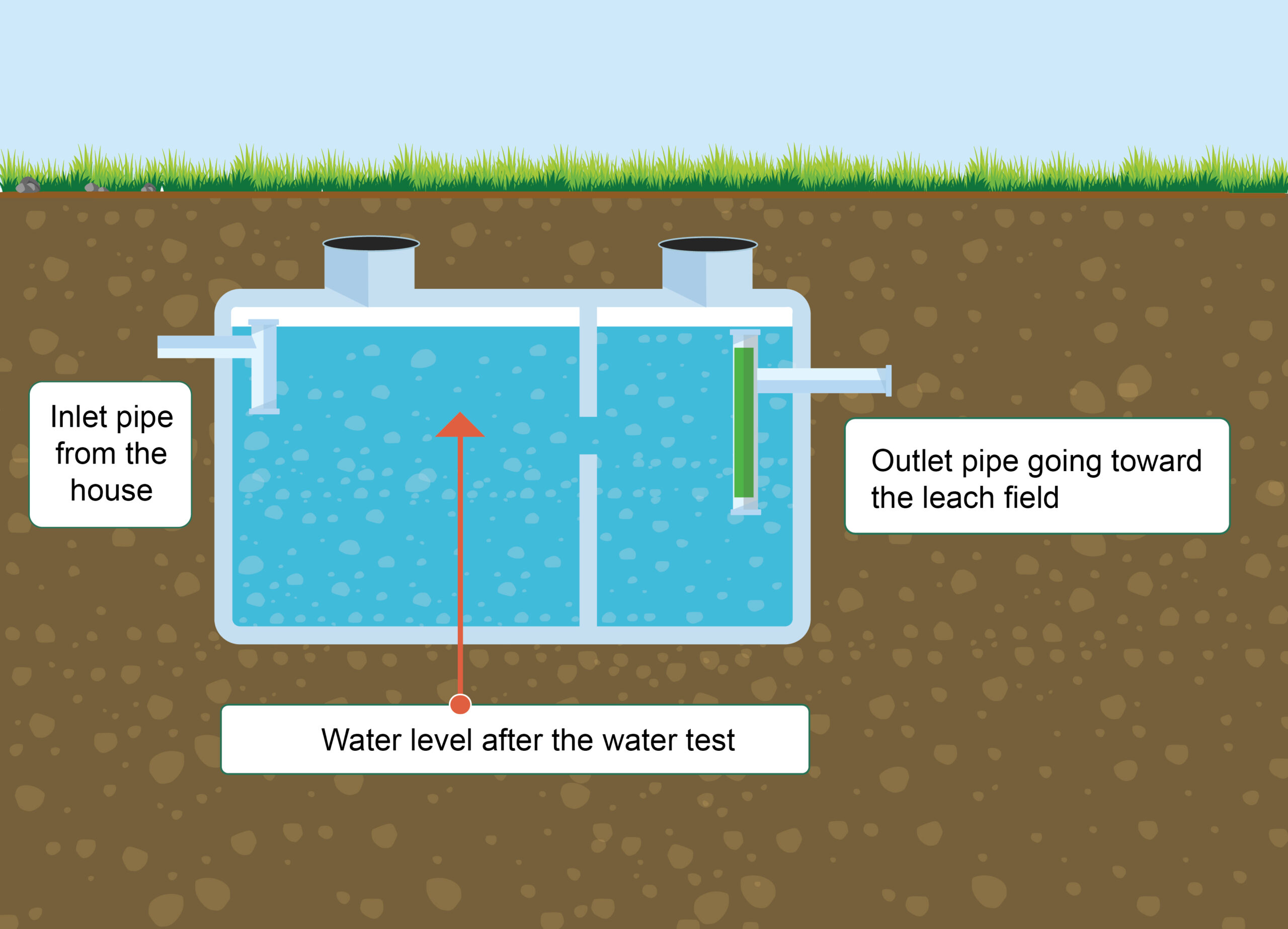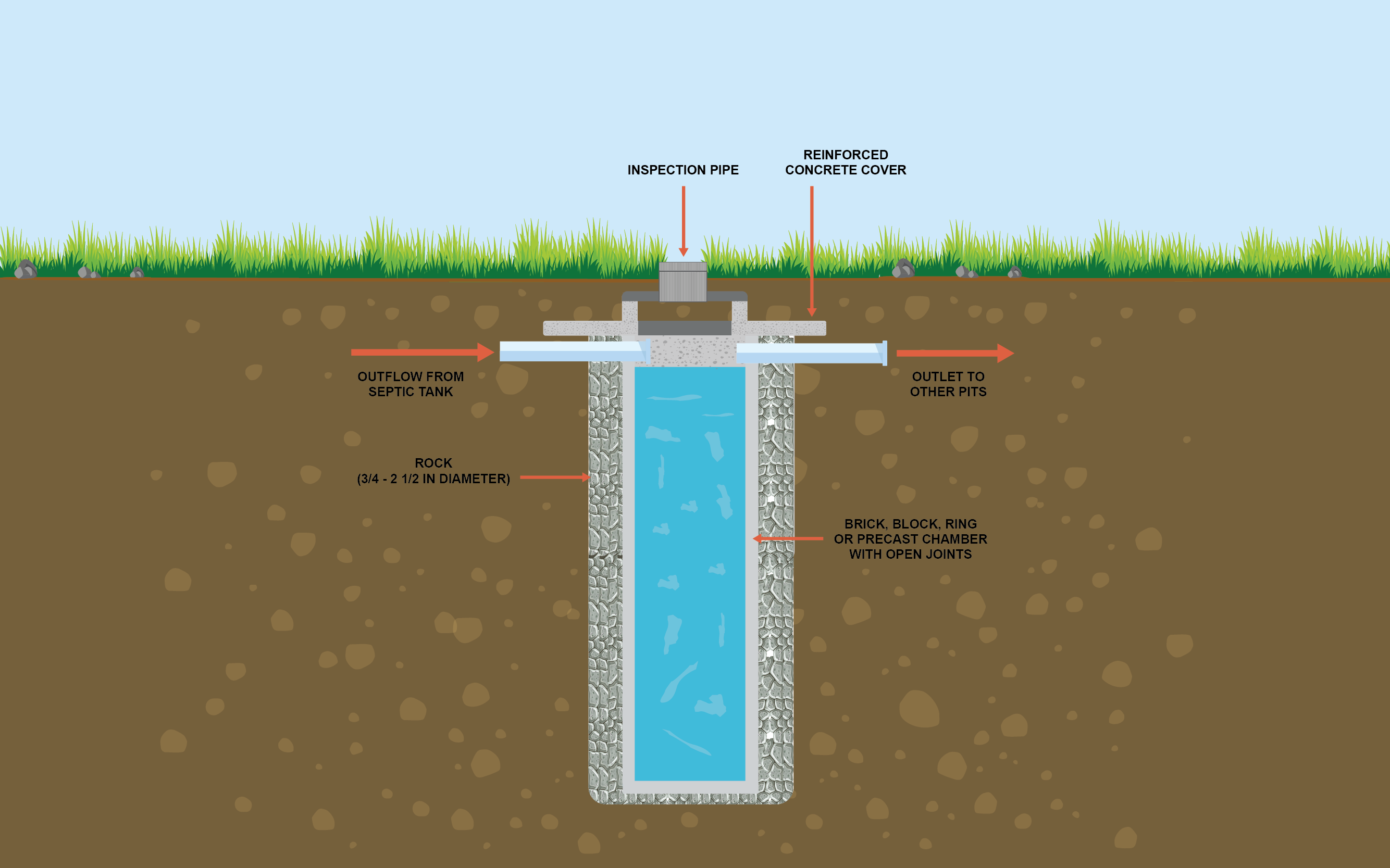An overfull septic tank is exactly what it sounds like—a tank that has exceeded its capacity, causing potential backups, drainage issues, and even system failure. But what causes a septic tank to overflow, and how can you prevent it? At Sequoia Pumping, we’ve seen it all, and we’re here to help homeowners in Fresno, Clovis, and the Central Valley understand the risks and solutions to keep their septic systems running smoothly.
What is an Overfull Septic Tank?
A properly functioning septic tank is designed to hold wastewater long enough for solids to settle at the bottom and for liquid effluent to flow into the drain field for further treatment. As you can see from the Diagram below, the “outlet” pipe is slightly lower than the “inlet” pipe, but the tank appears “full.” This is normal, as the tank is merely separating the liquid (also referred to as the “water”) from the solid and slowly releasing it to the leach field.

When a septic tank becomes overfull, it means:
- The tank is beyond its recommended capacity of solids and wastewater.
- Wastewater isn’t flowing out properly to the drain field.
- Sewage could back up into your home or pool in your yard.
An overfull septic tank is more than just an inconvenience—it can lead to expensive repairs and environmental contamination. As you can see from the diagram below, if there is a problem below the “outlet” pipe (e.g. a clogged pipe, failing leach field, etc.) the system won’t take additional water. If the water can’t be saturated through the outlet pipe, it will back up to the septic tank, and it will eventually push back up through the “inlet” pipe, and ultimately the house!

Why Does a Septic Tank Become Overfull?
There are several reasons why your septic tank may overflow. Here are the most common culprits:
1. Delayed or Infrequent Pumping
🚩 The #1 cause of overfull tanks is not pumping them often enough.
Septic tanks should typically be pumped every 3-5 years, depending on household size and water usage. If too much solid waste builds up, there’s less room for wastewater, leading to overflow.
💡 Solution:
✔ Schedule regular septic pumping with Sequoia Pumping to prevent buildup before it’s a problem.
2. Excessive Water Usage
🚩 Too much water entering the tank too quickly can overwhelm the system.
Common water-wasting habits include:
- Running multiple appliances at once (dishwasher + washing machine).
- Taking long showers back-to-back.
- Having a leaky toilet or faucet that runs constantly.
💡 Solution:
✔ Space out water usage throughout the day.
✔ Fix leaks immediately.
✔ Use water-efficient appliances and fixtures.
3. Clogged Drain Field
🚩 If the drain field stops absorbing wastewater, your tank can’t empty properly.
The drain field is responsible for filtering and dispersing liquid waste. If it gets clogged with sludge, grease, or tree roots, the wastewater has nowhere to go—leading to an overfull tank.
💡 Solution:
✔ Never pour grease, chemicals, or non-biodegradable items down your drains.
✔ Avoid planting trees or shrubs near the drain field to prevent root intrusion.
✔ If you suspect a drain field issue, call Sequoia Pumping for an inspection.
4. Flushing the Wrong Things
🚩 Your septic system is NOT a trash can.
Even “flushable” wipes don’t break down properly and can cause backups. Other common offenders include:
- Paper towels, feminine hygiene products, and diapers.
- Grease, coffee grounds, and food waste.
- Harsh chemicals that kill beneficial bacteria.
💡 Solution:
✔ Only flush human waste and toilet paper.
✔ Dispose of other items in the trash.
5. Rain and Flooding
🚩 Heavy rainfall can flood your drain field, making it impossible for water to drain properly.
During rainy seasons in the Central Valley, excess moisture can saturate the ground, backing up your system.
💡 Solution:
✔ Direct rainwater away from the drain field with proper landscaping.
✔ Consider installing a septic riser for easier maintenance.
Signs Your Septic Tank is Overfull
If you notice any of these warning signs, your tank may be too full:
✅ Slow drains throughout the house.
✅ Gurgling noises from toilets or sinks.
✅ Sewage odors inside or outside your home.
✅ Pooling water near the septic tank or drain field.
✅ Sewage backup in toilets, sinks, or showers (a serious emergency).
How to Prevent an Overfull Septic Tank
🔹 Pump your tank on schedule—every 3-5 years is recommended.
🔹 Be mindful of what goes down your drains—no grease, wipes, or non-biodegradable items.
🔹 Monitor water usage—spread out laundry, showers, and dishwasher cycles.
🔹 Protect your drain field—avoid planting trees nearby or driving over it.
Call Sequoia Pumping Before It’s Too Late!
An overfull septic tank isn’t just a hassle—it can be a costly disaster if left untreated. If you’re noticing warning signs, don’t wait for a backup!
At Sequoia Pumping, we provide septic pumping, inspections, and maintenance to homeowners across Fresno, Madera, Clovis, and the Central Valley. Contact us today at (559) 233-2400 to schedule a service and keep your system running smoothly!
👉 Better safe than sorry—pump your tank before it’s too late!




